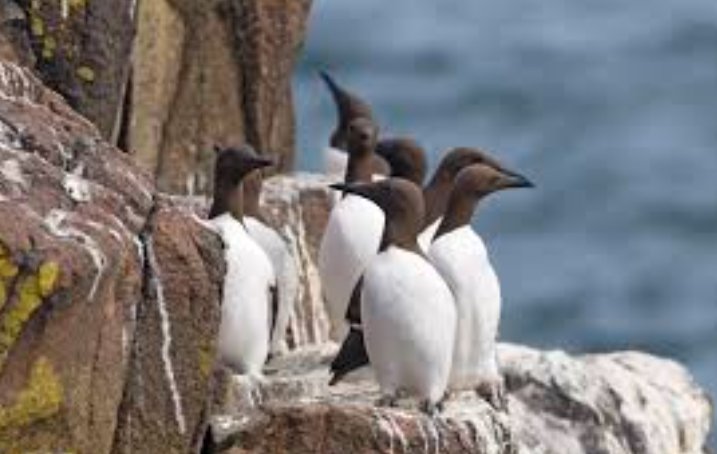A new £1.6 million fund has been launched to rescue Scotland’s embattled seabird populations — but the money comes as tensions grow over massive windfarm plans that conservationists fear could do more harm than good.
Big Money, Big Hope for Scotland’s Seabirds
Scotland’s rugged coasts have long echoed with the cries of gannets, puffins, and kittiwakes. But their numbers? Nearly half gone since the mid-1980s.
That’s where the new Seabird Resilience Fund steps in — offering a rare dose of hope. Managed by the Scottish Marine Environmental Enhancement Fund (SMEEF), it’s built on voluntary cash from nine offshore wind developers. And it’s not just for show. The fund aims to tackle real problems: invasive rats wiping out nests, rising seas drowning habitats, and warmer waters shaking up the food chain.
It’s a rough time to be a seabird. But maybe, just maybe, help has landed.

The Numbers Are Grim — But Not Hopeless
Let’s be blunt. Things have been bad for a while.
Since 1986, coastal breeding bird populations in Scotland have fallen by around 49%. That’s not just a blip — it’s a collapse. Climate change, shifting fish stocks, pollution, and invasive species have all played a role. It’s death by a thousand cuts.
But there’s a twist. Some species have recently shown flickers of recovery.
-
Kittiwakes have stabilised in certain regions.
-
European shags and guillemots are bouncing back in others.
It’s not a comeback yet. But it’s enough to fuel cautious optimism.
Scotland: A Global Stronghold for Seabirds
This isn’t just a local issue. Scotland matters globally when it comes to seabirds. It’s home to:
-
60% of the world’s great skua population
-
46% of northern gannets
-
16% of all Manx shearwaters
That puts Scotland in the spotlight. Protecting seabirds here isn’t just about saving them locally — it’s about preserving them planetwide.
Biosecurity surveys will now target vulnerable island habitats in 2025, scanning for rats and invasive weeds that can trash nesting areas in a single season. These early steps are crucial.
One sentence paragraph? Absolutely. Seabirds don’t have time for bureaucratic delays.
Who’s Paying for This?
Interestingly, it’s not public money on the line here. It’s the wind industry stepping up — or trying to.
Nine offshore wind developers have thrown cash into the pot, voluntarily. Not because they’re being forced to, but because pressure is mounting. Offshore wind is booming, but it’s not without its controversies.
That brings us to Berwick Bank.
Berwick Bank: Wind Power vs. Wildlife
If the new seabird fund is the sweet, then Berwick Bank is the sour.
It’s a proposed mega-windfarm — one of the largest in the world — sitting just 23 miles from some of Scotland’s most important seabird colonies like Bass Rock and St Abb’s Head.
The numbers in its environmental impact assessment are staggering:
| Species | Estimated Collisions Over 35 Years |
|---|---|
| Kittiwakes | 20,000+ |
| Gannets | ~7,000 |
| Herring gulls | ~3,000 |
| Total | 31,000+ |
It’s no wonder five of the UK’s leading conservation groups — RSPB Scotland, Scottish Wildlife Trust, National Trust for Scotland, and others — have urged the Scottish Government to block it.
RSPB Scotland’s Anne McCall didn’t mince her words: “I’ve never seen a development with so much potential damage.”
Can Offshore Wind and Wildlife Coexist?
This is the heart of the debate.
SSE Renewables, the developer behind Berwick Bank, insists it has revised its designs, moved turbines, and done its homework. It says it’s conducted one of the largest bird surveys ever attempted for a project like this.
But the critics? They’re not buying it.
They argue that floating wind technology — which places turbines further out at sea — is a better answer. Less visible, less risky, and less likely to end in mass seabird deaths.
Two-sentence paragraph? Necessary here. The issue is sharp, and so are opinions.
The application is still with the Scottish Government, submitted back in 2022. And everyone’s waiting for a decision.
Can a Fund Fix the Bigger Problem?
That £1.6 million sounds great — and it is. But seabird conservation isn’t just about band-aids.
Long-term survival depends on political decisions, smarter planning, and honestly, compromise. You can’t pour money into seabird protection on one hand and approve seabird-killing projects on the other.
NatureScot’s Cathay Tilbrook admits the stakes: “The challenge is significant but there are small signs of hope.”
The fund will help — it really will. But what Scotland decides next about Berwick Bank may say more about its commitment to seabirds than any pot of cash ever could.


















